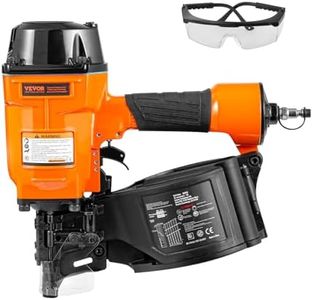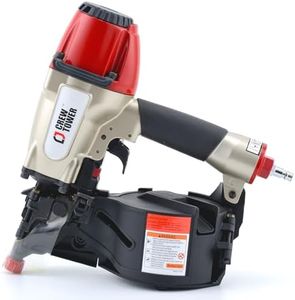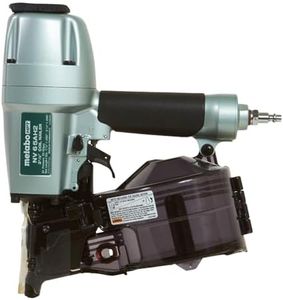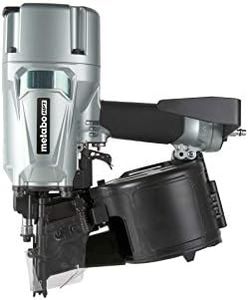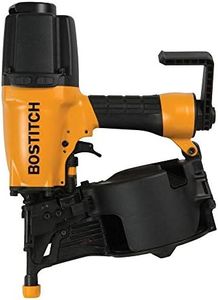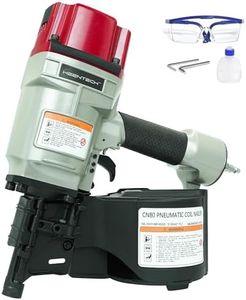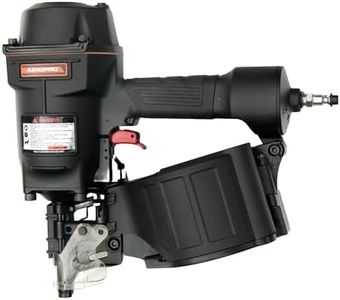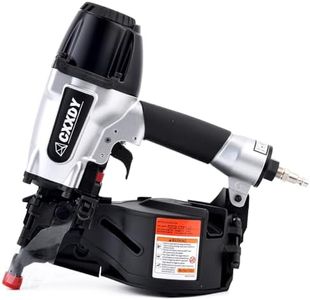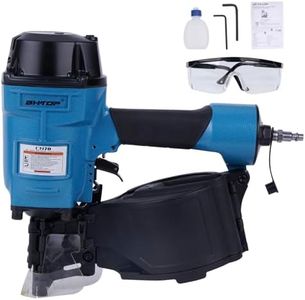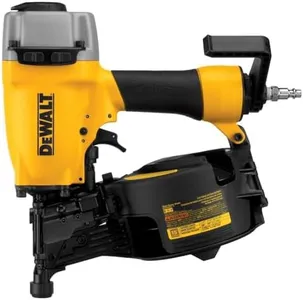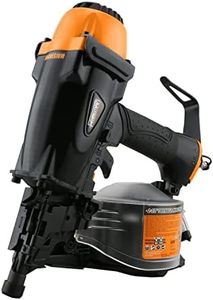We Use CookiesWe use cookies to enhance the security, performance,
functionality and for analytical and promotional activities. By continuing to browse this site you
are agreeing to our privacy policy
10 Best Coil Siding Nailers
From leading brands and best sellers available on the web.Buying Guide for the Best Coil Siding Nailers
Choosing the right coil siding nailer can make your siding projects much more efficient, comfortable, and precise. These tools are designed to rapidly secure siding materials to the exterior of buildings, and they're especially valued for their ability to hold plenty of nails in a compact coil. When choosing a nailer, understanding its main features and how they impact usability and performance is the key to long-term satisfaction. Think about the scale of your projects, the types of siding you'll work with, and how often you'll use the tool. Keeping your unique needs in mind while you review the main specs will help you pick a nailer that's both effective and enjoyable to use.Nail Size RangeThis spec tells you the shortest and longest nail lengths the nailer can accommodate, along with shank diameters. It's important because different siding materials call for different nail sizes to secure them properly and avoid damage. Basic nailers support a narrow range, maybe around 1-1/4" to 2". Mid-range models may go up to 2-1/2", while high-end units might handle from 1-1/4" up to 2-1/2" or even more. If you only work with thin, light siding, a shorter maximum size might suffice. For thick or heavy-duty materials, having a nailer that supports longer, thicker nails is best. Choose based on the types of projects and siding material you'll handle most often.
Magazine CapacityMagazine capacity refers to how many nails the tool can hold in its coil before needing a reload. High capacity means fewer interruptions, which is great for big jobs. Entry-level models may hold 200-250 nails, while heavy-duty versions can manage up to 400 or more. If you’re doing small tasks or occasional repairs, lower capacity may be adequate. For long runs and professional-level jobs, look for the largest magazine you are comfortable with to keep productivity high.
Operating PressureCoil siding nailers use air pressure, usually measured in PSI (pounds per square inch), to drive nails. The operating pressure tells you the minimum and maximum air pressure the tool needs to work correctly. Most nailers work between 70 and 120 PSI, but some demand a bit more. If you already own an air compressor, make sure the nailer’s required range matches your compressor’s output. If you plan to work on harder materials, tools that handle the higher end of the pressure spectrum offer slightly more power and versatility.
Weight and ErgonomicsThe weight of the siding nailer and how comfortably it fits in your hand are crucial, especially for extended use. Lighter nailers reduce fatigue and are easier to maneuver, which is ideal for overhead or all-day jobs. Heavier models may absorb more recoil but can be tiring if you’re holding them for long periods. Pay attention to overall weight (usually between 4.5 to 6 pounds), handle design, and trigger accessibility. Try to match the nailer’s feel to your physical comfort and the duration of your projects.
Depth AdjustmentDepth adjustment lets you control how deep the nail goes into the material. This matters for getting flush or slightly countersunk nails depending on your siding type and desired finish. Some tools offer tool-less adjustments for convenience, while others require extra tools to change the setting. If you’re working with a variety of siding species or thicknesses, easy and precise adjustment makes for a cleaner, more professional look and avoids damaging the material.
Exhaust DirectionExhaust direction refers to where the tool expels air from each shot. Adjustable exhausts can be turned away from your face or the siding surface, reducing discomfort and preventing debris from blowing back at you. If you do lots of overhead work or are sensitive to dust, having a rotatable or adjustable exhaust is a helpful feature. If you mainly work outdoors and in open areas, exhaust direction may be less critical.
Jam-Clearing MechanismEven top-quality nailers can occasionally jam, so how easily you can clear a jam matters a lot for workflow. Tool-free jam clearing features save time and frustration, while some older or basic models need tools and disassembly. If you value convenience or expect to nail continuously, look for a nailer with quick and simple jam-clearing abilities.
